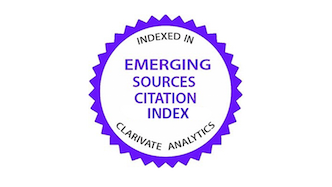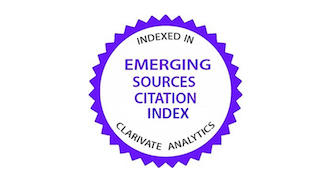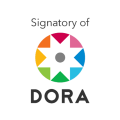Drying effect on phytochemical and functional properties of Bougainvillea glabra flower
DOI:
https://doi.org/10.15517/bsm4g647Keywords:
antioxidants, evaporation, secondary metabolites, extractsAbstract
Introduction. Bougainvillea glabra is an ornamental plant that has gained scientific attention due to its medicinal potential, therapeutic properties, and toxic effects. Objective. To evaluate the effect of three drying temperatures (50, 55, and 60 °C) on the phytochemical and functional characteristics of Bougainvillea glabra flowers. Materials and methods. The analyses were conducted from July to September 2024 in Chone canton (Ecuador). Flowers were collected in self-sealing bags and transported to the Chemistry and Bromatology Laboratory of the Faculty of Agricultural Sciences (Chone), Universidad Técnica de Manabí, Ecuador. This experimental research followed a completely randomized design consisting of three treatments (T1: 50 °C, T2: 55 °C, and T3: 60 °C). Drying kinetics were studied using a FD-12 dehydrator, and moisture loss was monitored using an analytical balance. Ground samples underwent aqueous extraction through maceration and filtration. Phytochemical screening was performed, and antioxidant capacity of the plant was assessed using ABTS (2,2'-azinobis(3-ethylbenzothiazoline-6-sulfonic acid)-diammonium salt) and DPPH (2,2-diphenyl-1-picrylhydrazyl radical) methods. Results. Higher drying temperatures resulted in greater plant material weight reduction. Phytochemical screening showed that drying temperature affected the presence of saponins and flavonoids; however, levels of tannins, free amino acids, and alkaloids remained stable. Catechins, triterpenes, reducing sugars, anthocyanins, and resins were not detected. Antioxidant activity analyses revealed that drying temperatures did not affect the DPPH results, while lower temperatures yielded higher antioxidant capacity in the ABTS method. Conclusions. Drying at 55 °C and 60 °C promoted greater weight loss, but negatively impacted the presence of saponins and catechins.
References
Alcântara Alves, L., Gomes Linhares, L., Alves Câmara, L. M., Gomes Linhares, M., Gama de Oliveira, J. C., & Freitas de Lima, D. (2021). Características fitoquímicas e capacidade antioxidante de Tabebuia caraíba (Caraibeira). Diversitas Journal, 6(2), 2270-2284. https://doi.org/10.17648/diversitas-journal-v6i2-1317
Armijos Aguilar, J. C., & Cedeño Saritama, R. E. (2019). Relación del contenido de fenoles totales, flavonoides y la capacidad antioxidante en brácteas de Bougainvillea glabra Choisy [Tesis de pregrado, Universidad Técnica de Machala]. Repositorio Digital de la Universidad Técnica de Machala. https://repositorio.utmachala.edu.ec/handle/48000/14135
Corona, E. (2024). Bugambilia: un recurso biocultural adoptado por el mundo. El Tlacuache (1129), 3-18. https://www.revistas.inah.gob.mx/index.php/eltlacuache/issue/view/3304/3584
Esquivel Méndez, L. N. V. (2024). Bioaccesibilidad y actividad biológica de compuestos fenólicos en higos e infusiones de hojas de Ficus carica L. durante la digestión gastrointestinal simulada [Tesis de maestría, Universidad Veracruzana]. Repositorio Institucional de la Universidad Veracruzana. https://cdigital.uv.mx/server/api/core/bitstreams/a10cda6c-baee-494d-9fa5-d669e544f471/content
García Vieyra, M. I., Jaramillo Arellano, J. E., Guajardo García, J. A., Sánchez Carmona, A., & Rodríguez Guerrero, K. L. (2022). Perfil Fitoquímico y capacidad antioxidante de tés de flores de plantas medicinales. Jóvenes en la Ciencia, 16, 1-8. https://www.jovenesenlaciencia.ugto.mx/index.php/jovenesenlaciencia/article/view/3595
Gómez Bache, U. M., Barbosa Navarro, L., & Petricevich, V. L. (2016). Estudio preliminar del efecto hipoglucémico del extracto de Bougainvillea xbuttiana (variedad naranja) en modelo murino. Revista Mexicana de Ciencias Farmacéuticas, 47(3), 60-66. https://www.redalyc.org/pdf/579/57956611005.pdf
Herrera, J. (2022). Deshidratación del cedrón con un secador solar, regulando la temperatura y humedad relativa del aire al interior del colector. Revista Universidad y Sociedad, 14(2), 579-587. http://scielo.sld.cu/scielo.php?pid=S2218-36202022000200579&script=sci_arttext
Huang, J., Zaynab, M., Sharif, Y., Khan, J., Al-Yahyai, R., Sadder, M., Ali, M., Alarab, S. R., & Li, S. (2024). Tannins as antimicrobial agents: understanding toxic effects on pathogens. Toxicon, 247, Article, 107812. https://doi.org/10.1016/j.toxicon.2024.107812
Jaramillo Jaramillo, C. G., Solano Maza, L. O., Campo Fernández, M., & Rojas de Astudillo, L. (2023). Composición química y actividad antioxidante de hojas de dos variedades de Bougainvillea glabra Choisy. Cumbres, 9(1), 9-20. https://dialnet.unirioja.es/servlet/articulo?codigo=9046148
Jaramillo-Jaramillo, C. G., Zambrano-Gonzaga, K. A., Armijos-Aguilar, J. C., Cuenca-Buele, S. A., Tocto-León, M., & Rojas de Astudillo, L. (2023). Evaluación del contenido de alcaloides, la toxicidad aguda y antitusiva de las brácteas de dos variedades de Bougainvillea glabra Choisy. Revista Científica de la Facultad de Ciencias Veterinarias de la Universidad del Zulia, 33(2): 1-7. https://produccioncientificaluz.org/index.php/cientifica/article/view/40300
Lago, A. V., Almora, H. E., González, G. K., Hernández, R. Y., Echemendia, A. O., & Monteagudo, B. R. (2021). Metabolitos secundarios y capacidad antioxidante de hojas secas de Moringa oleifera Lam. cultivada en Cuba. Revista Cubana de Plantas Medicinales, 26(1), 1-12. https://www.medigraphic.com/cgi-bin/new/resumen.cgi?IDARTICULO=106011
Latos-Brozio, M., & Masek, A. (2020). Natural polymeric compound based on high thermal stability catechin from green tea. Biomolecules, 10(8), Article 1191. https://doi.org/10.3390/biom10081191
Liu, Y.-J., Lai, Y.-J., Wang, R., Lo, Y.-C., & Chiu, C.-H. (2020). The effect of thermal processing on the saponin profiles of Momordica charantia L. Journal of Food Quality, 2020(1), Article 8862020. https://doi.org/10.1155/2020/8862020
López, T., Morillo, M., Visbal, T., & Carmona, J. (2022). Estudio fitoquímico, actividad antioxidante y toxicidad sobre Artemia salina de los extractos de las hojas de Justicia secunda Vahl. (Acanthaceae), recolectada en Mérida-Venezuela. Revista Colombiana de Ciencias Químico-Farmacéuticas, 51(1), 213-229. https://doi.org/https://doi.org/10.15446/rcciquifa.v51n1.95333
López-Álvarez, Ó., Zas, R., & Marey-Pérez, M. (2023). Resin tapping: a review of the main factors modulating pine resin yield. Industrial Crops and Products, 202, Article 117105. https://doi.org/10.1016/j.indcrop.2023.117105
Medda, S., Sanchez-Ballesta, M. T., Romero, I., Dessena, L., & Mulas, M. (2021). Expression of structural flavonoid biosynthesis genes in dark-blue and white myrtle berries (Myrtus communis L.). Plants, 10(2), Article 316. https://doi.org/10.3390/plants10020316
Ríos-Aguirre, S., & Gil-Garzón, M. A. (2021). Microencapsulación por secado por aspersión de compuestos bioactivos en diversas matrices: una revisión. Tecnológicas, 24(51), Artículo e1836. https://doi.org/10.22430/22565337.1836
Sánchez Llodrá, F. I., Galván Ayala, D., & Pitre Ruíz, L. (2022). Análisis fitoquímico de extractos de frutos y hojas de dividivi (Caesalpinia coriaria) (JACQ.) Willd. Ciencia e Ingeniería, 9(2), Artículo e7449405. https://www.doi.org/10.5281/zenodo.7449405
Silva Paz, R. J., Mateo Mendoza, D. K., Eccoña Sota, A., & Della Rocca, P. A. (2022). Secado de hojas de muña (Minthostachys mollis): modelado, cinética y propiedades termodinámicas. Enfoque UTE, 13(4), 60-74. https://doi.org/https://doi.org/10.29019/enfoqueute.827
Sokač, T., Gunjević, V., Pušek, A., Jurinjak Tušek, A., Dujmic, F., Brnčić, M., Kovačević Ganić, K., Jakovljević, T., Uher, D., Mitric, G., & Radojčić Redovniković, I. (2022). Comparison of drying methods and their effect on the stability of Graševina grape pomace biologically active compounds. Foods, 11(1), Article 112. https://doi.org/10.3390/foods11010112
Vegas Niño, R. M., Acosta Arteaga, Y., & Fernández Segura, C. (2024). Obtención, purificación y aprovechamiento de azúcares reductores a partir de materiales lignocelulósicos. Revista Boliviana de Química, 41(2), 76-93. https://doi.org/10.34098/2078-3949.41.2.2

Additional Files
Published
License
Copyright (c) 2025 Bryan Ostaiza-Zambrano, Gema Flecher-Loor, José Muñoz-Murillo, Diego Segovia-Cedeño (Autor/a)

This work is licensed under a Creative Commons Attribution-NonCommercial-NoDerivatives 4.0 International License.
1. Proposed policy for open access journals
Authors who publish in this journal accept the following conditions:
a. Authors retain the copyright and assign to the journal the right to the first publication, with the work registered under the attribution, non-commercial and no-derivative license from Creative Commons, which allows third parties to use what has been published as long as they mention the authorship of the work and upon first publication in this journal, the work may not be used for commercial purposes and the publications may not be used to remix, transform or create another work.
b. Authors may enter into additional independent contractual arrangements for the non-exclusive distribution of the version of the article published in this journal (e.g., including it in an institutional repository or publishing it in a book) provided that they clearly indicate that the work was first published in this journal.
c. Authors are permitted and encouraged to publish their work on the Internet (e.g. on institutional or personal pages) before and during the review and publication process, as it may lead to productive exchanges and faster and wider dissemination of published work (see The Effect of Open Access).






























